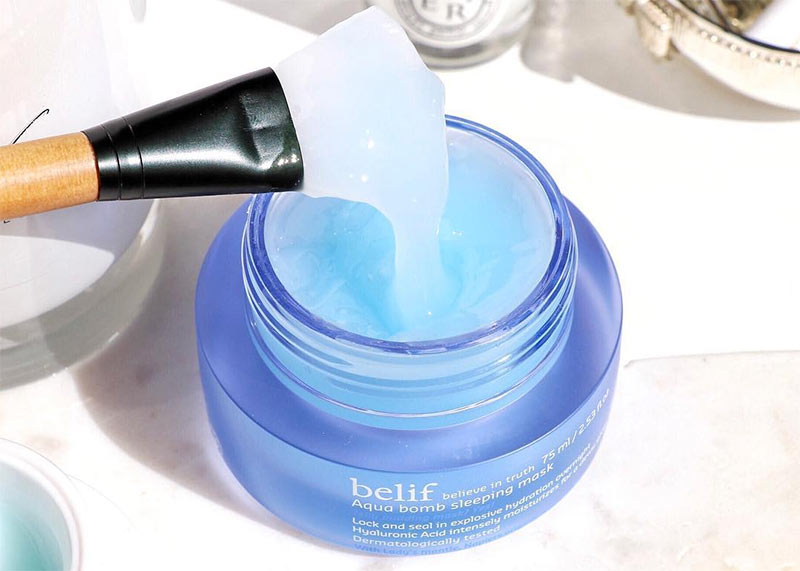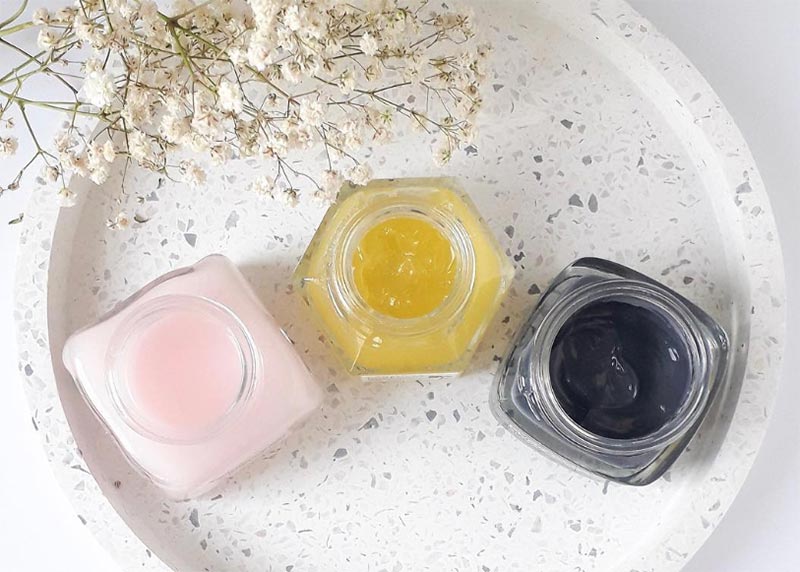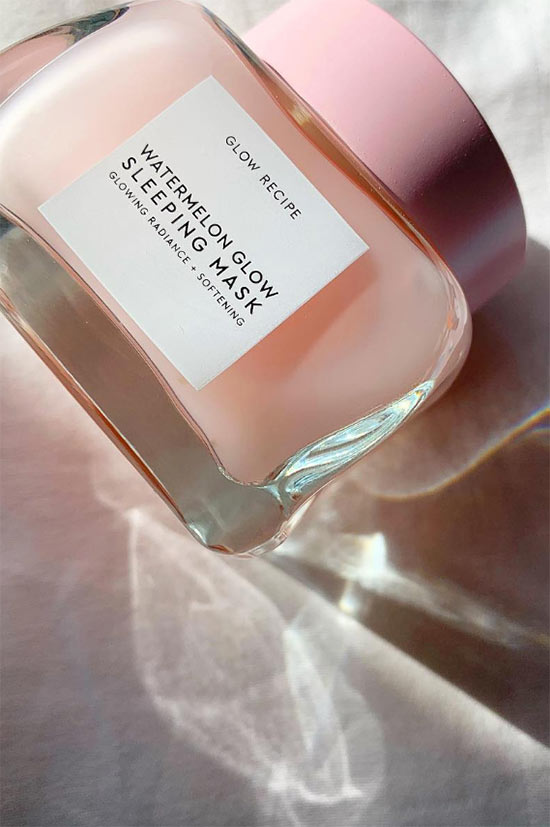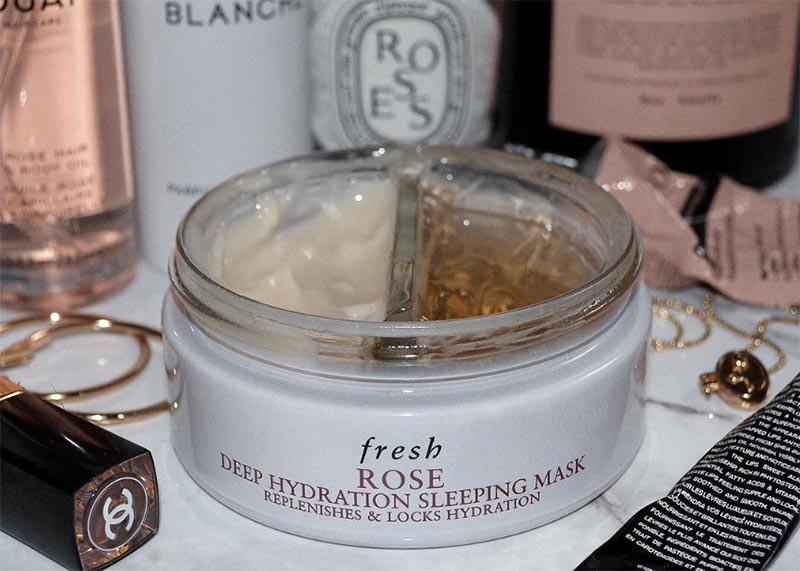Putting sleeping mask on takes seconds, and it works overnight to magically transform the skin – allegedly. When new products are released brands try to introduce them as something essential, and while that is certainly not true for sleeping masks… they’re actually pretty nice.
In this article, we’ll explain what sleeping masks are and how they differ from night creams, so you understand if an overnight face mask will be right for you. To finish things off, we’ll make sure you use your sleeping mask correctly with a detailed guide.
In this article:
- What Is a Sleeping Mask and How Does It Differ from Night Cream?
- Overnight Sleeping Mask Benefits
- How to Use an Overnight Sleeping Mask?
What Is a Sleeping Mask and How Does It Differ from Night Cream?
Also known as a sleeping pack or an overnight face mask, a sleeping mask is a hydrating face cream formulated for overnight use, which calms and moisturizes the skin while you are sleeping. The major difference between your average sleeping mask and night cream is the texture, which also ends up impacting the actual method through which each one of them works.
A sleeping mask is usually much lighter in texture than a night cream, because it contains a lot of humectants (ingredients that pull moisture into the skin from the atmosphere) and very few occlusives (ingredients that create a layer over the skin that seals-in moisture). Because of this, throughout the night, a sleeping mask can keep attracting moisture into the skin, which is why you wake up with such glowy, hydrated skin after using one.
The average night cream will have the exact opposite ratio, with more occlusives than humectants. Because of this night creams are a little bit less hydrating on their own, but they are excellent at keeping moisture and hydration in the skin. This is great for those with very dry skin that cannot keep moisture in on its own, and it’s fabulous for environments where the air is very dry so it is very hard to keep moisture in the skin.

Humid climates where the air is very moist are actually perfect for sleeping mask users, because the sleeping mask can pull a lot of moisture from the air. A sleeping mask will be less effective in an area where the air is dry, although that can be mitigated with the help of a humidifier. It is not surprising that the original sleeping mask formulations came from Korea, where the climate is extremely humid.
Those with oily skin will benefit the most from using a sleeping mask, since their skin already has a natural occlusive effect from the oil it produces, and the mask won’t load their skin up with additional, unnecessary oil. Those with dry skin will only benefit from using a sleeping mask if they live in a humid climate.
There are also a few differences that might occasionally pop up. Night creams often contain strong active ingredients like retinol or AHA, while sleeping masks rarely do since their primary purpose is to hydrate the skin. Despite that, some of the best sleeping masks on the market actually do contain glycolic acid and do have an exfoliating effect, so this is definitely not a rule.

Overnight Sleeping Mask Benefits
There are many benefits to using a sleeping mask, all of which you can find below:
Hydrating
Because of the incredible amount of humectants, sleeping masks are incredibly hydrating to the skin – more so than a lot of regular moisturizers. They are made with a variety of humectants, with the most common ones being glycerin, hyaluronic acid, propylene glycol, and betaine. These humectants pull moisture from the air into the skin all night long, so in the morning you will wake up with glowy, hydrated skin that looks more youthful.
Soothing
Sleeping masks often contain ingredients that help to boost the skin’s barrier capabilities and fortify it as a result. Even the go-to moisturizing ingredients have a soothing effect on stressed skin, but usually a sleeping mask will be fortified with skin-soothing natural extracts as well.
Anti-Aging
Almost every sleeping mask on the market is fortified with a few antioxidants to prevent the free radical damage of sun and pollution exposure, which leads to extrinsic aging. In other words, a sleeping mask helps to undo the damage of day-to-day exposure, and thereby it helps to keep the skin looking youthful for longer.
Vitamin E is the most common antioxidant used, along with a variety of mineral and natural plant extracts that also pack a punch. If you’re just looking for prevention then any sleeping mask will work.
Sometimes you will also see sleeping masks fortified with peptides, which are molecules that preliminary research suggests might have a collagen-boosting and wrinkle-fading effect. A product that contains these peptides will be the best sleeping mask for those wanting more significant anti-aging effects.
Resurfacing
Many sleeping masks on the market are made with glycolic or lactic acid, to gently exfoliate the skin. Regular exfoliation is important for keeping the skin cells reproducing in top shape, as well as for keeping skin texture smooth ensuring optimal penetration of skincare ingredients.
Many people find it difficult to find the time to exfoliate, especially if they prefer a chemical exfoliant that has to stay on the skin to work. A sleeping mask that is both hydrating and exfoliating is a great way to get two benefits in one, and it does all of the work while you sleep!
No Mess!
The best sleeping mask formulas are made specifically to adhere to the skin and not leave behind a residue. You don’t need to worry about getting your pillow dirty, as the gels are non-staining.

How to Use an Overnight Sleeping Mask?
A sleeping mask can become a wonderful part of your evening skincare routine. Some sleeping masks can be used every night, while others may only be used a few times a week, so make sure to read the directions on the product you’ve purchased.
If your sleeping mask contains any resurfacing ingredients, like glycolic acid or retinol, then start off by using it just once or twice a week and slowly increase how often you use it – if your skin gets sensitive then decrease how often you use it.
If you’d like to increase the skin-soothing properties of your sleeping mask, then keep it in your mini fridge. The cool temperature will instantly calm your skin, especially if it’s a little stressed.
- Cleanse
Start your evening skincare routine by cleansing your skin in whichever way you like and that best suits your skin, but make sure all makeup, sunscreen and grime are thoroughly removed from your skin, and that there is no trace of the cleanser.
- Apply Your Skincare First
Do the rest of your night-time skincare routine: toners, essences, spot treatments, and serums all layer very nicely under a sleep mask – creams, however, may not interact as nicely, so it is best to use a sleeping mask instead of a night cream.
- Apply It
If your sleeping mask comes in a jar, scoop out about a quarter-sized amount with a clean skincare spatula. Apply it to your skin in a gentle patting motion, making sure not to rub it in.
- Apply a Second Layer
If your skin is feeling a little extra dry or dehydrated, wait until the first layer absorbs and then go back in with a second layer. That’s it, your skin is now ready for bed!
- Rinse off in the Morning
Once you wake up in the morning, rinse off the sleeping mask, as the sealing ingredients in it might not play nicely with your morning skin care. Lukewarm water and a face cloth should suffice, although you can also use a gentle cleanser if you prefer.

If you’re in need of a small pick-me-up any time of the day, you can also use your sleeping mask as a regular skincare mask!
- Apply the sleeping mask to cleansed skin, using the same gentle patting motion I mentioned previously.
- Let the mask stay on your skin for 10-15 minutes.
- Rinse it off with lukewarm water – if that doesn’t seem to be enough you can also use a face cloth or opt for a gentle cleanser.
- Now that your face is glowing and hydrated, ensure that goodness lasts by following it up with the rest of your skincare routine.
- If you’re doing the mask in the daytime, make sure that you have an SPF as your final step to keep your skin protected from the sun.
Photos via @michmilla





